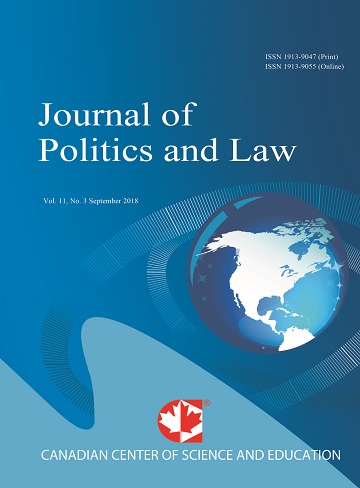State-induced Famine in Eritrea: Persecution and Crime against Humanity
- Bahlbi Y. Malk
Abstract
Famine remains one of the major causes of deaths and displacements in the Sub-Saharan African countries where people have continuously been compelled to cross international borders in search of livelihood securities. There is no question that the continent has been exposed to erratic rainfalls, crop failures and droughts, but contemporary famine has less to do with natural-related crop failures and much to do with poor governance. The author argues that state’s premeditated action, inaction and incompetency to respond to insecurity and threats are largely responsible for African famines. Due to historical misperception of African famine and oversimplification of refugees’ motives from Africa, however, food-based persecution has not been a common subject of research. Besides, the absence of drought does not necessary mean the absence of famine either, because the aforementioned factors frequently cause it to happen even in the middle of plenty. Therefore, the purpose of this paper is to explore how government’s action or inaction can lead to famine in the absence or presence of drought which in return forces people to escape from drastically deteriorating conditions of existence by flight. The goal of this paper is mainly to challenge the common perception that famine as being the drought-induced outcome of humanitarian crisis in Africa and refugees as being victims of the natural circumstance. Thus, this paper argues that a government that deprives its citizens of the basic necessity such as the right to food is as dangerous as the one that persecutes its citizens on the five Convention grounds. Hence, taking Eritrea as a case example, this article discusses chronic food insecurity and mass starvation as a state-induced disaster, which I believe should be considered a crime against humanity under the Rome Statute of the International Criminal Court.- Full Text:
 PDF
PDF
- DOI:10.5539/jpl.v10n4p1
Journal Metrics
h-index (2017): 14
i10-index (2017): 39
h5-index (2017): 9
h5-median (2017): 11
Index
- Academic Journals Database
- ACNP
- ANVUR (Italian National Agency for the Evaluation of Universities and Research Institutes)
- Berkeley Library
- CNKI Scholar
- COPAC
- CrossRef
- DTU Library
- EBSCOhost
- Elektronische Zeitschriftenbibliothek (EZB)
- EuroPub Database
- Excellence in Research for Australia (ERA)
- Genamics JournalSeek
- GETIT@YALE (Yale University Library)
- Ghent University Library
- Google Scholar
- Harvard Library
- HeinOnline
- INDEX ISLAMICUS
- Infotrieve
- Jisc Library Hub Discover
- JournalGuide
- JournalTOCs
- LOCKSS
- MIAR
- Mir@bel
- NewJour
- Norwegian Centre for Research Data (NSD)
- Open J-Gate
- PKP Open Archives Harvester
- Publons
- Pubmed journal list
- RePEc
- ROAD
- Scilit
- SHERPA/RoMEO
- Standard Periodical Directory
- Stanford Libraries
- UCR Library
- Ulrich's
- UniCat
- Universe Digital Library
- UoS Library
- WorldCat
- Zeitschriften Daten Bank (ZDB)
Contact
- William TaiEditorial Assistant
- jpl@ccsenet.org
